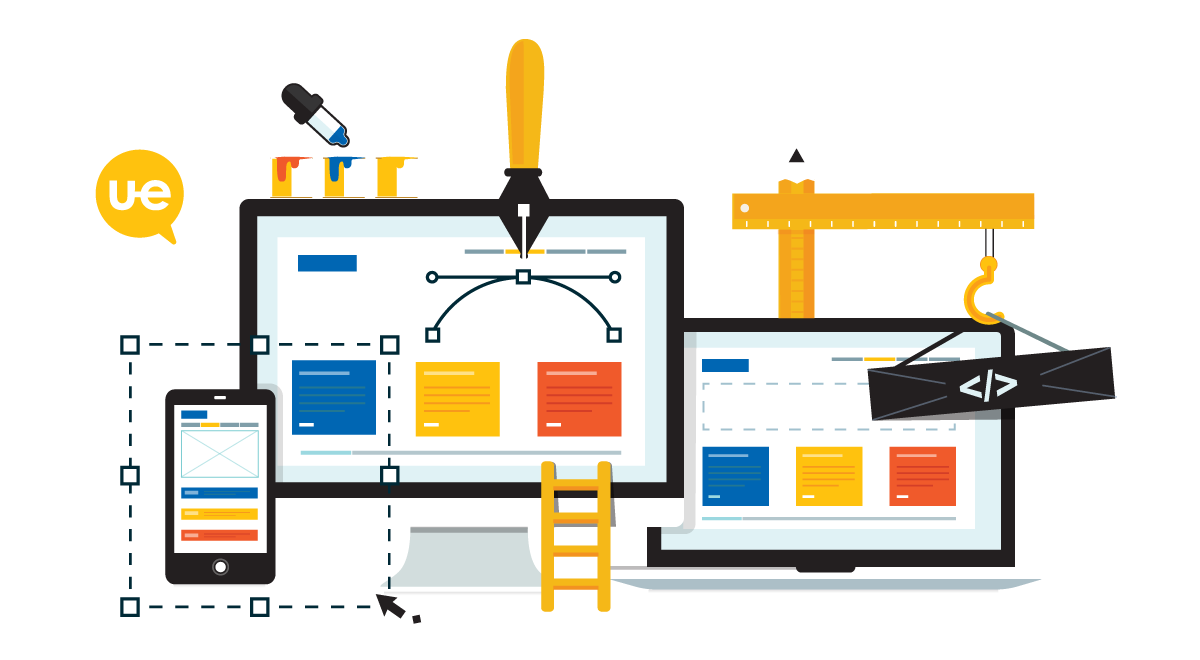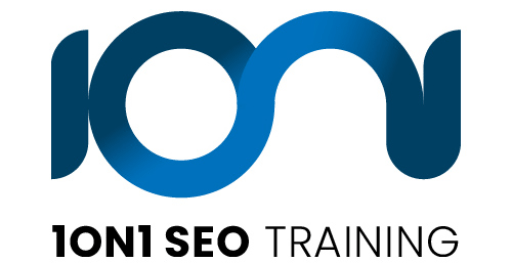On-Page SEO Training
1ON1 SEO Training offers professional, agency-grade on-page SEO training for digital marketing professionals, digital marketing teams, SEO specialists, SEO consultants, PR professionals, marketing managers, and entrepreneurs from all markets and industry verticals.
This training also strengthens your technical SEO foundation, ensuring your skills align with how search engines crawl and rank content.

You’ll gain actionable insights into improving your website content, from keyword usage to writing compelling meta descriptions. Learn essential technical SEO techniques that impact how search engine algorithms interpret your pages.

Bruce Jones, SEO scientist, inbound marketing expert, and founder of six different SEO companies, will lead all on-page SEO training sessions. Sign up for two one-hour sessions for $200 today.
Bruce also covers structured data and URL structure; two vital aspects that help search engines crawl and index your individual pages more effectively.
"Let's prove the method by seeing how successful you can be after we work together."
Bruce Jones
author of Learn SEO: Think Like Your Customers to Get More of Them
Coaching and mentoring are two of the best ways to learn new strategies in digital marketing. While books and videos can provide supplemental knowledge, you’ll need someone who has seen everything in the SEO industry. Bruce Jones has helped grow countless individuals and companies in his twenty-plus-year career as an SEO consultant. He’ll help you develop the SEO skills necessary to optimize your website with search engine optimized content that ranks.
After selling his previous SEO business, he continued his work and inbound marketing advocacies at Bruce Jones SEO and 1ON1 SEO Training.
Bruce believes that any professional can benefit from on-page SEO training at any stage in their career, and it doesn’t matter if you learned about SEO five years ago or just today. Whether you’re just beginning with keyword research or looking to refine your meta description strategy, this training is for you What’s important is you understand why it matters and why it continues to be the future of successful inbound marketing efforts.
Learn About the Best Practices
From Our On-Page SEO Training
To improve search engine rankings and attract more visitors from search results, you can use all the things that you’ll learn in our exclusive on-page SEO training program. Our sessions dive deep into technical SEO elements, such as URL structure, internal linking, and how search engines crawl content.
The page’s title tags, internal links, and text are among the many things that need upgrading. We’ll teach you how to write meta descriptions that boost click through rate and reflect search intent.
Google and other search engines utilize keywords and other on-page SEO signals to determine if a page is relevant to a user’s query.
And if the search engine thinks the user will find the content helpful, it will rank the page higher. This is why understanding featured snippets, keyword stuffing pitfalls, and content relevance is so important.
Everything that can be done directly to a page (or within site itself) is considered on-page SEO. While on-page SEO focuses on the internal workings of a website, off-page SEO considers anything that can be optimized externally or “off-site.”
This includes off page optimization strategies like link building, which complement your technical SEO efforts.
When it comes to off-page SEO, backlinks are crucial. Social media and public relations are two more. Both are crucial to a successful SEO campaign. But even the best link building won’t help if your website content isn’t optimized for how search engines crawl it.
Search engines analyze the content for keywords and other on-page SEO aspects to determine if a page is relevant to a user’s search.
And if Google thinks the user will find the page helpful, it will show it to them. To put it another way, Google does consider on-page SEO signals.
Google’s algorithm continuously evolves, but the search giant has never stopped putting users first. Google suggests centering your efforts on “people-first content.”
Therefore, producing useful information that satisfies user intent is more crucial than ever.
We emphasize using SEO tools to identify your target keyword and optimize your content accordingly.
Meta tags are bits of code that explain to search engines what your page is about and how they should present it in their results. They also instruct browsers on how to present the information to users. You’ll learn more about meta tags when you sign up for Bruce’s on-page SEO training. We’ll also teach you how to write meta descriptions that attract more organic traffic and improve your visibility in SERPs.
Meta tags appear in search engine results on Google and other major search engines. Using unique content and keyword-optimized meta descriptions gives your pages a competitive edge. Titles are crucial in providing users with an immediate understanding of a result’s content and relevance to their query.
Write meta descriptions that match search intent to enhance click through rate. Therefore, it’s crucial to have high-quality titles on your web pages because they are often the initial piece of information used to pick which result to click on.
Your first thought upon hearing the term “SEO” is probably of keywords. However, search engine ranking algorithms are getting more intelligent nowadays. They now factor in elements like alt text, structured data, and mobile responsiveness, hallmarks of good technical SEO.
Images and site speed are also taken into account with keywords. Slow-loading images might harm your SEO. Photos that are correctly tagged, load quickly, and are related to the content on your site can boost your web presence in the long term. Use alt text effectively to ensure images contribute to how search engines crawl your website content.
Image SEO involves adjusting so bots and humans can interpret a website’s visual content. In this phase, you provide the necessary background information for your visuals so that computers and humans can interpret them.
The rich media you upload can impact your website’s SEO. You’ll learn more about this in our on-page SEO training program.
For instance, optimized and high-quality photographs have a better chance of appearing in image searches. More individuals may visit your site because of this. An increase in user engagement, retention, and time on the page can all result from effective photo utilization.
Images and videos take a long time to load on websites. Therefore, picture compression enhances page speeds and load times. Your site’s Core Web Vitals score considers three factors; LCP is one of them.
This is how Google decides how user-friendly a website is. LCP monitors how long it takes the page’s most significant component to load. As a result, the LCP score benefits from faster image loading times.
Successful websites, in a nutshell, are those whose owners cared enough to optimize their photos for both human visitors and search engine crawlers. Follow the included instructions to assemble them.
Users and search engines are equally important considerations during the website development process. It would help if you had on-page SEO training so people will find your website more quickly. We’ll explore how URL structure and internal linking support technical SEO and help search engines crawl your content.
However, you would also need to invest in simple and effective website design to help customers locate the products they seek. By aligning your design with technical SEO best practices, you’ll optimize your website for both users and bots. Finding a happy medium between user friendliness and search engine optimization is a constant struggle for site owners.
Many organizations further complicate matters by dividing their SEO and web development departments. Building a beautiful and successful website requires the collaboration of multiple teams, even if they are all located under one roof.
The SEO team will ensure the site has enough information to rank well in Google’s search results for user search queries. In contrast, the development team will struggle to keep the site’s visual and user aspects as simple as possible.
No matter how beautiful the design of your business website is, if no pages within it appear in search engine results, no one will ever see it.
It’s crucial to identify organic strategies to increase website traffic and move up to page one of the SERPs, although social media and pay-per-click ads are ideal.
Search engines can send steady visitors to your site if its SEO does well. When someone uses Google to look for something, they have a question they want to be answered.
And when your page is at the top of the search results with that precise response, people will visit it. The rest is history!
Industry seers consistently advocate for producing more articles of a substantial length to achieve first-page Google rankings. This approach allows for natural keyword usage without falling into keyword stuffing traps. Word count is also one of the things that we’ll be studying in on-page SEO training here at 1ON1 SEO Training.
A well-structured blog post with relevant keywords and proper URL structure is more likely to be picked up for featured snippets. Marketers are constantly on edge because of Google’s frequent algorithm modifications, such as the May 2022 core upgrade, which leaves them wondering how to get their content to rank at the top.
But how exactly does wordiness aid your SERP standings?
First, Google has more information to use in determining the context of a longer sentence. Longer, better-optimized posts will increase the frequency with which your focus term appears.
However, this is only possible if the text is optimized inherently. Moreover, you’ll have more room to work on relevant keywords and synonyms the longer your piece is.
Additional headings, links, and graphics must be included in longer texts. These components can be inherently optimized for your selected keywords.
Having more content means you can include more valuable details for your audience.
When you create more extensive articles, your site will rank higher for related long-tail keywords. Longer writing pieces allow you to discuss several subjects using relevant long-tail keywords.
Using this strategy, you can potentially address the subtopics in SERPs for the long-tail keywords you’re after.
Every SEO plan should place heavy emphasis on how a website is structured. Effective technical SEO includes optimizing your URL structure and internal navigation to help search engines crawl all areas of your site. The structure of your website communicates to search engines like Google and Bing what content is most vital to your site.
Therefore, your site’s organization will impact how well various pages and posts perform in SERPs. While links, keywords, and content are all critical components of an SEO strategy, they are all for naught if your website cannot convey priority information to Google.
The organization and connectivity of your website’s pages are known as its “architecture” or “structure.” It lays the groundwork upon which design and content can be constructed.
For example, the structure of a typical website consists of a homepage that links to other sections of the site.
Web designers and SEO specialists alike aim to create sites that are user-friendly and enjoyable to explore.
There are two main types of website architecture: flat and deep.
A flat website design aims to make navigating the site as simple as feasible. However, if your website has a deep structure, you can make topic-specific pages and send visitors down more circuitous paths to reach their destination.
Most up-to-date websites have a flat layout, making it simple to find what you need. In addition, flat-structured websites are simpler for both visitors and search engines to explore.
Search engines are more likely to find their way around your site if it has a well-designed structure, easy navigation, and a solid internal linking structure. We also teach how to optimize your website using online SEO training courses designed for real-world application Sitelinks are inbound hyperlinks that Google displays beside your primary URL.
The structure of your site and its internal linkages play a role in deciding what the subpages will be about.
For example, pages that are directly associated with primary menu tabs and menu items are prioritized by Google.
